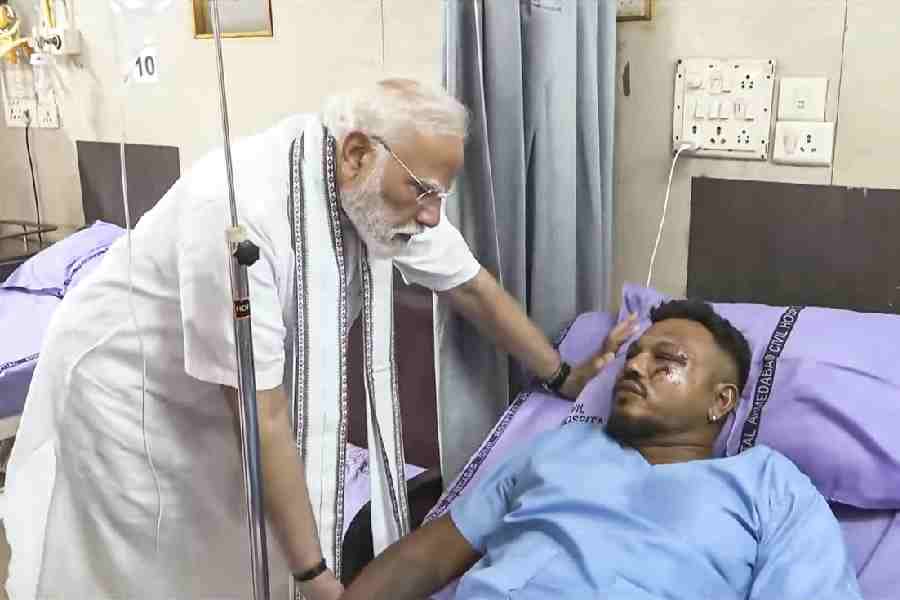
Like everything else, chit funds are supposed to have a millennia-long history in India. But they can be traced with certitude to Syrian Christian merchants settled in the late 18th century by Raja Rama Varma IX in Thrissur. Chit funds continue to flourish in Kerala. The government tries to 'regulate' them; in 2008, 10,269 of them were registered with the ministry of corporate affairs. But the informal finance industry is much broader.
Traditionally, the moneylender was the villager's bank. The villager's income fluctuates, and his savings are precarious. So the moneylender cannot rely on timely repayments, and uses coercion to collect them sometimes. In colonial times, he could also take away a farmer's land pledged against a loan. In those days, it led to agitations and riots; these days it often leads farmers to kill themselves. These tragedies have worried governments from time to time; the first legislation in India against moneylenders goes back to the 1870s. But a constructive solution has not occurred to the governments till today.
A pathbreaking innovation occurred in Bangladesh: Muhammad Yunus set up Grameen Bank in 1983. It dealt with groups of rural women, and not individual borrowers. Since the poor women had no assets, mortgage security was dispensed with; the loans were basically unsecured. Instead, the women were required to save and deposit money in the bank; the deposits were lent to other women in the group on the basis of the group's consensus. The women collectively assured repayment of individual loans. Thus, the loans to a group were substantially self-financing.
The model spread to India, with one difference. There was no scarcity of savings; banks, with refinance from the National Bank for Agriculture and Rural Development, had plenty of money to lend to villagers. So they used women's collectives as guarantors of individual loans instead of asking for security; but they did not make the women build up deposits. Since Grameen Bank in Bangladesh did not have State funds, it developed a model in which women saved and lent to one another; Indian banks, on the other hand, concentrated on lending.
The banks had few branches in villages; there was an enormous rural market they could not cater to. So for-profit microfinance providers began to spread to villages. The margin between rural and urban interest rates was so huge that rural microfinance was potentially lucrative. SKS Microfinance, based on this model, made a public issue in July 2010 which sold out quickly.
But there were also stories of these microfinance institutions using coercion to make borrowers repay. Acting on them, the government of Andhra Pradesh issued an ordinance on October 19, 2011. Basically, it tied up the microfinanciers in red tape, wrote off all their loans on which interest had exceeded the principal, and prohibited any further loans from a lender to the same borrower. If a self-help group had borrowed from a bank, it could borrow from an MFI only for an income-generating activity of which it had to give proof to the government. An MFI had to ask for registration. At that point it had to give a list of employees. It could use only those employees, and no one else - not even new employees - to collect loans.
In the following year, the number of MFIs' borrowers in Andhra Pradesh fell by 28 per cent, loan disbursements fell by 67 per cent, and loan portfolio fell by 38 per cent. The AP MFIs closed 12 per cent of their branches, and reduced their workforce by 28 per cent. MFIs outside AP did not suffer, but their business grew little.
The next two years were bad for the national MFI industry; according to the Community Development Finance Associations, the number of MFI branches fell from 13,562 in 2011 to 10,697 in 2013. Almost 40 per cent of the staff left the industry in 2011-12; only about 10 per cent were replaced. The number of borrowers had risen from 3.5 million in 2005 to 26.7 million in 2010. Then it stagnated; in 2013, it was 27.5 million. The loan portfolio, too, changed little between 2011 and 2013 (Rs 24.7 billion to Rs 25.7 billion). But then the crisis ended, and growth was resumed. By 2016, the number of branches had risen to 11,644, the number of borrowers to 39.9 million and the portfolio to Rs 63.9 billion. Facing trouble in rural markets, MFIs started lending in cities; cities' share in MFI loans went up from a third in 2013 to two-thirds in 2015.
MFIs are required to have equity amounting to at least 15 per cent of their risk-weighted assets. Those of them that belong to banks or nonbank finance companies can get capital from their parents. The rest cannot easily tap the equity market, since the reputation of their business is not great. So they securitize their assets and sell them off; in other words, they convert their money-lending activity into debt collection. They have securitized a quarter of their loans in this way.
Almost half of the loans belong to business correspondents, the funny name the Reserve Bank of India has given to rural agents of banks. Initially, only virtuous entities such as charities, nonprofits and cooperatives were allowed to represent banks in villages. But there were not enough of them, and many did not want to labour for banks. So the RBI removed the restrictions, and the reviled moneylenders became agents of government banks - business correspondents.
MFIs find it difficult to keep manpower. In 2011-12, they recruited 12,975, but still their workforce fell by 27,703: in other words, 40,678 or almost 40 per cent of the workforce left within one year. Even in 2016, which was a good year, the industry recruited 39,627, but the workforce went up by only 16,529; 23,098 left.
Since the government discriminates in favour of 'income-generating' loans, they accounted for 94 per cent of the MFIs' portfolio in 2016. Thirty nine per cent of the money went to animal husbandry, 29 per cent to trading activity, and 15 per cent to agriculture; industry and handicrafts, on which the prime minister is very keen, got a measly 4 per cent. The virtuous bias applies equally to loans given for non-productive purposes: although 61 per cent of the money was given for consumption, 12 per cent was for education, 18 per cent went for housing and 7 per cent for water and sanitation. The prime minister is also passionate about toilets, but the money lent for them by MFIs is insignificant.
For a century and a half, the government has blown hot and cold about village moneylenders. Since it nationalized banks in 1969, it has also tried to push them into rural moneylending, with little effect. Many moneylenders have donned the hat of the business correspondent, got money from banks and relent it. They are not a happy lot; many complain that the sliver of a commission banks give them is not sufficient compensation for all the red tape they have to suffer. Some work for MFIs, which are somewhat more generous. But neither banks nor MFIs cater to the needs of the hapless villager. So independent moneylenders survive.











